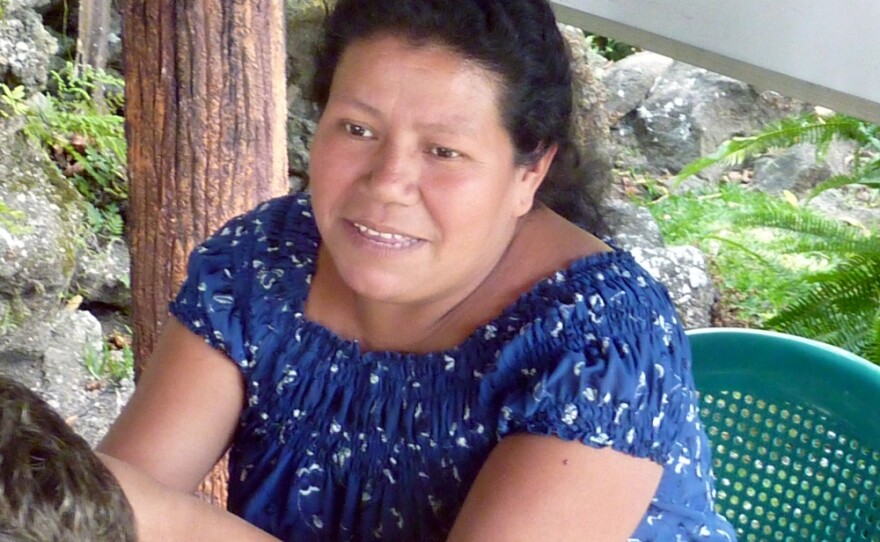SAN PEDRO LA LAGUNA, GUATEMALA — Students are flocking to Spanish immersion programs in countries like Guatemala. It has given birth to a new industry, an industry that is full of women.
San Pedro La Laguna, Guatemala, high in the Mayan Highlands along the shores of Lake Atitlan, is a theme park for foreigners seeking to take their Spanish to the next level. At the San Pedro Spanish School, the teaching is intensive: one student, one teacher.
Vicenta Estela García Peneleu is a maestra, Spanish for teacher. She’s been teaching at the San Pedro Spanish School for seven years. She’s 39 years old, and has four children. At first, she told me that her husband died years ago. Later, she had a different story.
“In reality, my husband isn’t dead. He's working in Guatemala City,” she said. Garcia explained that her husband stays away, and does not come home to the family. She laments that he is more distant from the family than is normal. While he sometimes provides support, that help is erratic.
“I talked with him about keeping the love and affection of his children and not losing their trust in him,” she said. But those talks have little impact. “I’m really alone with my children – with their education, with everything.”
Garcia thinks the problem is cultural, and that Guatemalan men need to focus more on taking care of their families.
“In Guatemala, there are many cases where the men still have the concept of machismo. I think it’s the lack of role models,” she said.
García is typical of many women who teach in Spanish immersion schools. Previously, she was an unemployed secretary, out of work for a year. She even considered fleeing to the United States, illegally, to support her family.
But those thoughts are behind her now. That’s because teaching Spanish in Guatemala is more than a job -- it’s a lifesaver.
Fifteen years ago, before the boom in Spanish immersion schools in Guatemala, women like García had few options to support their families. They could weave textiles or produce handicrafts at home, but there’s not much money in that. In a country where men typically earn more, whatever they do, teaching is different. In Guatemala, women have the same rights to the same salaries as men.
Many of the teachers at these Spanish-language schools have little formal teacher training. Most of García’s training was on the job.
“Here, little by little, I learned many things about teaching, about how much I like teaching, how much I like doing it, and how much I like to share with people from different countries,” she said. This leads to the question: How important is certification for a Spanish language teacher?
Vernon Smith has taught Spanish at the college level for 20 years. Smith thinks the diplomas have little to do with the quality of experience at these Spanish immersion schools. It doesn’t take a diploma on the wall for that.
“It takes a person who actually wants to be a teacher,” Smith said.
Smith believes a native speaker in the native context is going to be the most authentic and the most expert source for learning Spanish.
“Around Lake Atitlan,” he said, “you’re having the pure experience.”
That “pure experience” comes surprisingly cheap. Four hours of daily private instruction costs around $95 a week in this area. About half of that money goes to the teacher. Some have criticized this whole experience as a kind of linguistic tourism, exploiting Central American teachers.
Smith doesn’t think it’s an issue. “It’s basically creating a cottage industry that they’re able to have without having certification … but are able to provide a true service that is high quality. And frankly, if it pays the bills, that’s not a bad thing,” he said.
It pays the bills, as long as the tourists keep coming. During the Guatemalan rainy season, the flow of students reduces to a trickle. No students means no money. But eventually the rain stops, the students return and Estela García is teaching again.





